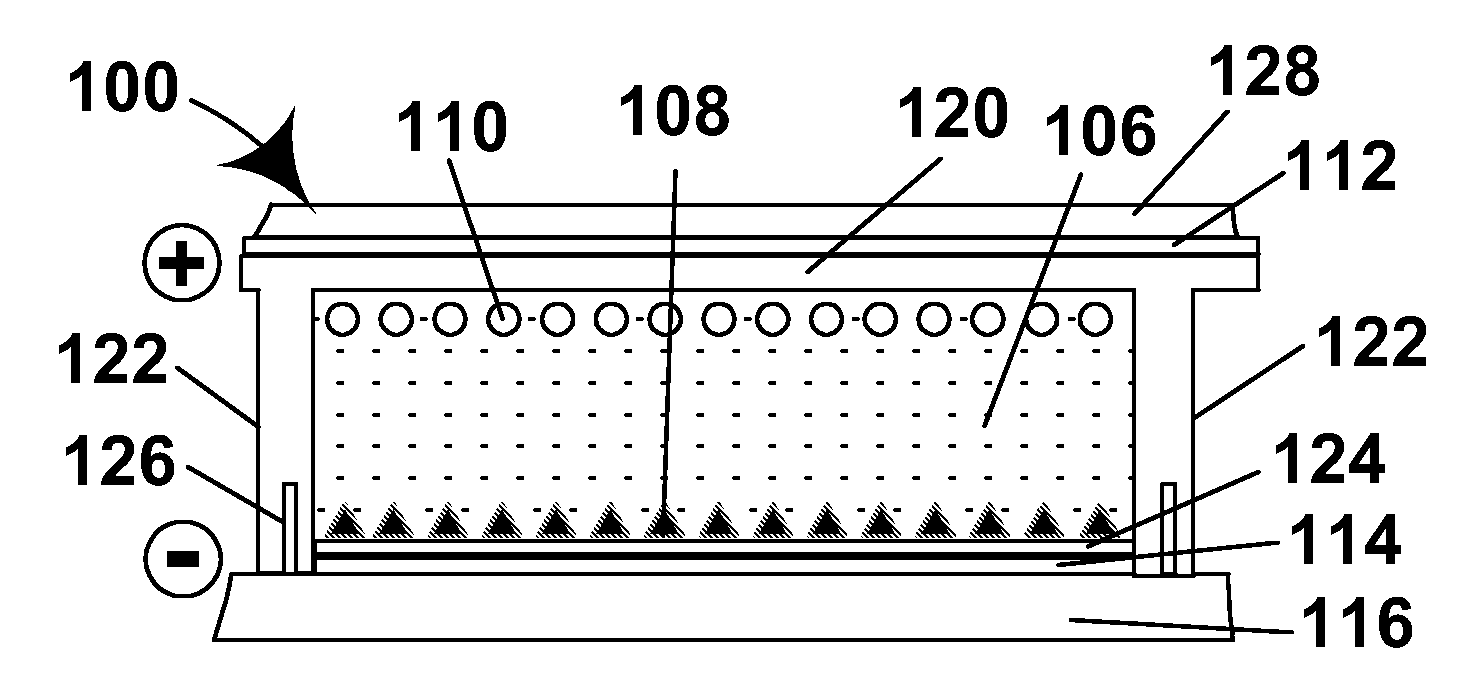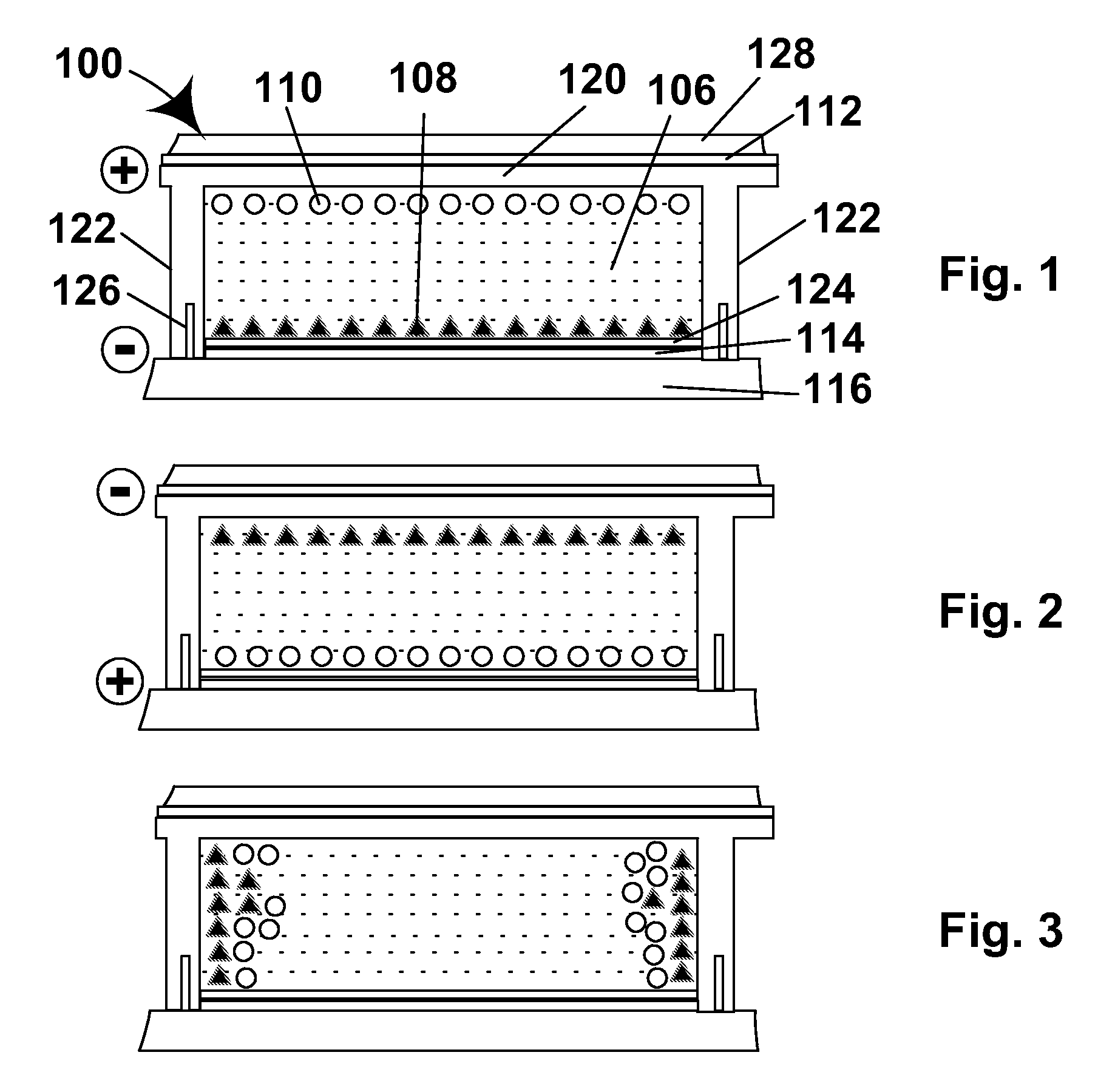Electrophoretic displays using gaseous fluids
a technology of electrophoretic displays and fluids, applied in the field of electrophoretic displays using gaseous fluids, can solve the problems of inadequate service life of these displays, widespread use, and the inability to meet the needs of the user, and achieve the effect of reducing the transmission of ultraviolet radiation
- Summary
- Abstract
- Description
- Claims
- Application Information
AI Technical Summary
Benefits of technology
Problems solved by technology
Method used
Image
Examples
Embodiment Construction
[0044]As will be apparent from the foregoing Summary of the invention Section, this invention provides numerous different improvements in gas-based electrophoretic displays. The various aspects of the invention will mainly be described separately below, but it should be recognized that a single gas-based electrophoretic display may make use of several different aspects of the invention. For example, the accompanying drawings are provided primarily to illustrate the operation of a lateral movement display of the present invention, but the illustrated display could also make use of coated titania particles, coated carbon black particles, walls with controlled resistivity or other aspects of the present invention.
[0045]Improvements Relating to Charging of Gas-Based Displays
[0046]The first major problem with GB electrophoretic displays relates to developing and maintaining charge on the electrophoretic particles. Obviously, the electrophoretic movement of particles for changing the opti...
PUM
| Property | Measurement | Unit |
|---|---|---|
| volume resistivity | aaaaa | aaaaa |
| glass transition temperature | aaaaa | aaaaa |
| frequency | aaaaa | aaaaa |
Abstract
Description
Claims
Application Information
 Login to View More
Login to View More - R&D
- Intellectual Property
- Life Sciences
- Materials
- Tech Scout
- Unparalleled Data Quality
- Higher Quality Content
- 60% Fewer Hallucinations
Browse by: Latest US Patents, China's latest patents, Technical Efficacy Thesaurus, Application Domain, Technology Topic, Popular Technical Reports.
© 2025 PatSnap. All rights reserved.Legal|Privacy policy|Modern Slavery Act Transparency Statement|Sitemap|About US| Contact US: help@patsnap.com


